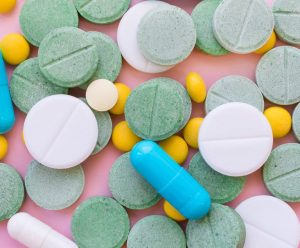Tramadol withdrawal and dependence are best handled through medically supervised detox which is an inclusive type of drug detox. As is the case with other opioid drugs, when someone becomes dependent on Tramadol, it is advisable not to quit suddenly without professional assistance.
Medical detox affords the user a great level of medical care with 24-hour monitoring by qualified professionals. Chronic Tramadol abuse affects the areas of the brain associated with impulse control and feelings of pleasure. Thus, anyone who is dependent on Tramadol will want to keep taking it or resume Tramadol use to ease the withdrawal symptoms. The severe psychological symptoms of Tramadol withdrawal such as cravings and depression can be dealt with in medical detox using specific medications.
Home Remedy Options for Tramadol Withdrawal
When one is dependent on opioid drugs such as Tramadol, their body becomes accustomed to having them in the system. This means the body develops a tolerance to most of the side effects produced by the drug so when the user stops taking Tramadol suddenly it can lead to a powerful reaction.
Users who try to detox from Tramadol alone will have to make the necessary preparations beforehand. It is always good to taper off opiates gradually before quitting completely. This can reduce the intensity of Tramadol withdrawal but since addiction makes the user highly compulsive most people find it impossible to self-regulate when tapering. This usually results in full relapse.
It is common to experience dehydration during Tramadol withdrawal from diarrhea and vomiting, which could result in severe health difficulties. Most people wind up hospitalized with dehydration when going through Tramadol withdrawal, which is why is it is important to take lots of fluids during this period. Electrolytes are very effective for helping you stay hydrated.
Medications
If the user is unable to bear the withdrawal symptoms, the physician can prescribe medications for Medication-Assisted-Treatment or over-the-counter drugs to help in managing them. These drugs include:
 Suboxone, which is a combination of Naloxone and Buprenorphine used to ease withdrawal symptoms and get rid of the euphoric reactions caused by opioids.
Suboxone, which is a combination of Naloxone and Buprenorphine used to ease withdrawal symptoms and get rid of the euphoric reactions caused by opioids.- Buprenorphine or Subutex is administered for the relief of withdrawal symptoms
- Valium for insomnia and anxiety
- Clonidine is used for sweating and anxiety
- Acetaminophen, Ibuprofen, or other nonsteroidal anti-inflammatory drugs (NSAIDs) for muscle pains
- Loperamide for diarrhea
- Metoclopramide for vomiting and nausea
These medications can help you deal with drug cravings and alleviate the symptoms so you don’t relapse back into Tramadol use. Qualified medical staff can use various supplements or drugs to address certain Tramadol withdrawal symptoms.
It is important to prepare before going through Tramadol withdrawal symptoms as they can go on for days to weeks. Acquiring enough medication to last a couple of weeks could prevent the need to go outside as frequently. However, you must exercise caution with these medications to avoid using more than the recommended doses. In case you feel the regular doses aren’t helpful, make sure to speak to your physician so they can see how to adjust the treatment.
Pharmaceutical management and medication can be very efficient for managing withdrawal symptoms and helping the patient achieve some degree of physical stability. Therapeutic and holistic approaches can help the recovering user better control drug cravings, stress, and mood swings. A combination of supportive, pharmacological, and therapeutic methods is the best way to address substance use disorders, addiction, and Tramadol dependence.
Alternative Treatment Methods
Even though there is not much proof about the use of supplements and vitamins to treat opioid withdrawal, there are studies that have looked into Chinese herbal medicine and acupuncture. Several studies have shown that withdrawal symptoms were reduced when users were given certain medicines in combination with acupuncture.
Staying Safe and Comfortable
 When going through Tramadol withdrawal, it is advisable to keep yourself as comfortable as possible. You can keep yourself occupied with distractions such as books or movies. Have some extra sheets, a fan, and soft blankets as you will have to frequently change beddings because of excessive sweating.
When going through Tramadol withdrawal, it is advisable to keep yourself as comfortable as possible. You can keep yourself occupied with distractions such as books or movies. Have some extra sheets, a fan, and soft blankets as you will have to frequently change beddings because of excessive sweating.
Inform any family members or friends before you start the Tramadol withdrawal process so they can offer the relevant and necessary support. Other than that, it is good to have someone who can check in on how you’re doing. Take care not to fall for any stories and recipes online about how to handle Tramadol withdrawal since there’s a chance they haven’t been tested for efficacy or safety and could put you at risk.
Keeping your mind engaged and occupied during this time is crucial. Participate in activities you enjoy, which helps to boost the endorphins produced in the body. It also improves your likelihood of long-term success. Eat some chocolate, go outside and engage in physical activity even if it means taking a short walk around your house. Staying positive also helps you stay strong and on the path.
Get Support
 Going through Tramadol withdrawal alone can be dangerous if you don’t go about it the right way. Make sure you get help from medical professionals or your physician. They can recommend drugs to alleviate the withdrawal symptoms making the whole process easier to handle.
Going through Tramadol withdrawal alone can be dangerous if you don’t go about it the right way. Make sure you get help from medical professionals or your physician. They can recommend drugs to alleviate the withdrawal symptoms making the whole process easier to handle.
Staying in a detox facility during Tramadol withdrawal means the medical staff can observe your progress and health to ensure everything proceeds effectively and safely. They can also watch for any dangerous side effects or harmful complications from Tramadol withdrawal. The medical staff can also help to make sure the recovery sticks long-term. Medications to ease Tramadol withdrawal can also be administered in a detox facility to alleviate some withdrawal symptoms.
If you are concerned about Tramadol withdrawal symptoms or are afraid you won’t be able to make it through the process, look for a rehab treatment facility to assist or consult with your physician.



